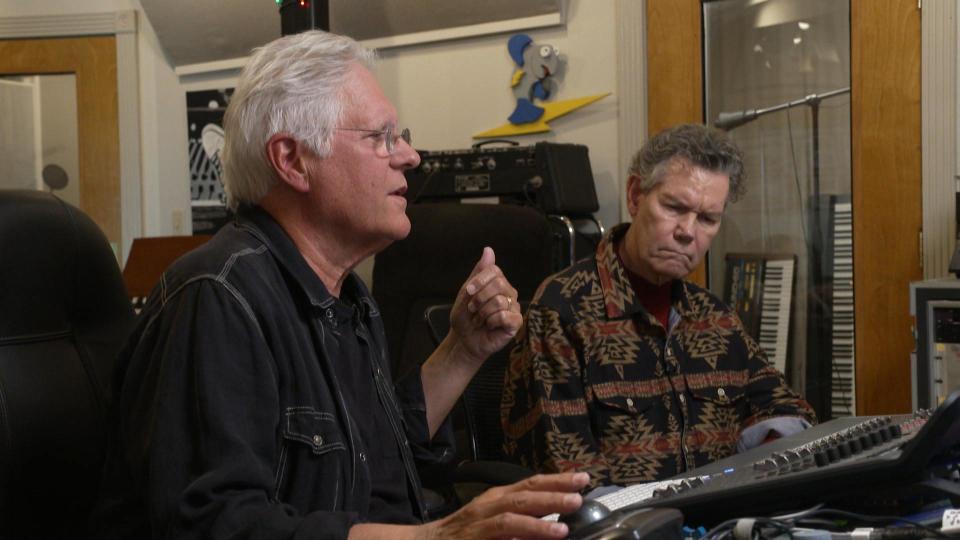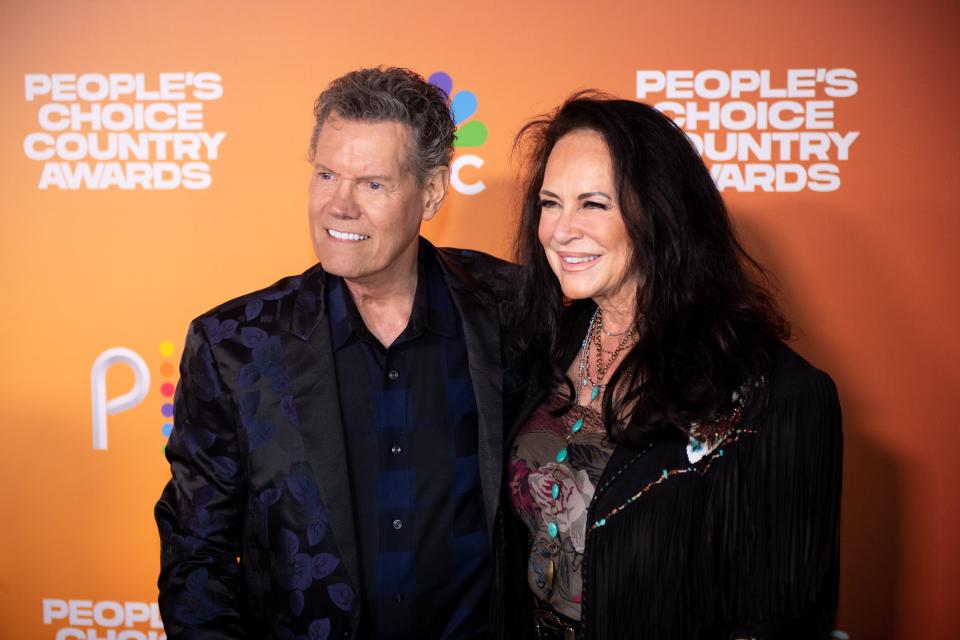How Randy Travis' new song, the first after his stroke, came together with the help of AI
Via a stunning country music comeback, an unlikely artist has emerged at the core of the conversation regarding artificial intelligence's best-use practices.
Yes, stroke survivor, 65-year-old Country Music Hall of Famer and musical icon Randy Travis has released "Where That Came From," his first new music in over a decade. Here's what to know.
When did Randy Travis suffer a stroke?
The Grammy-winner, famed for songs like "Forever and Ever, Amen" and "Three Wooden Crosses," hasn't released a new song in a decade because, in 2013, he suffered a debilitating stroke that left him with aphasia.
After being hospitalized in Dallas, Texas, for viral cardiomyopathy, Travis suffered congestive heart failure and a stroke. The stroke affected the left side of Travis' brain, left him on life support with a one percent chance of survival and impacted the movement on the right side of his body. Three bouts with pneumonia led to a trio of tracheostomies and two brain surgeries, affecting his ability to speak and sing.
How AI came to be involved in new Randy Travis' track
2023 saw conversations emerge around artificial intelligence and the need to protect artists' rights. For as much as issues like copyright infringement and proper legislation were (and are still) occurring, Cris Lacy, Warner Music Nashville co-chair and co-president, believed that a positive result of artificial intelligence's influence in the music industry would be giving Randy Travis his voice back.

Lacy connected with Travis and his longtime producer, Kyle Lehning, about the next potential steps.
Lehning recalled "Where That Came From," an unreleased ballad written by Scotty Emerick and John Scott Sherrill and initially recorded by James Dupre, a frequent Travis touring partner.
"The motivation behind a musical recording is specific to each individual artist," says Lacy.
"The genesis of this particular track came from a visceral desire to restore what was taken away from someone we know and love. In working with (Travis) to make new recordings, the byproduct is a gift that goes straight to our hearts. AI may have been a tool that helped us along, but a group of dedicated and passionate humans, including Randy himself, brought this beautiful song to life."
Lehning and Travis spent months working, millisecond by millisecond, on every note of "Where That Came From," blending human touches with artificial intelligence to create a uniquely authentic work.
"It's not about how it sounds. It's about how it feels," Lehning stated in a CBS feature.
Lehning put Dupre's vocal into an AI model. After five minutes, the vocal emerged, and Travis sat with his frequent engineer, Casey Wood, and producer Lehning to analyze it. The tandem offered to the Associated Press that 70-75 of the track was deemed passable, while the other portion required alterations to vocal vibrato speed or slowing and relaxing phrases.
"Randy, I remember watching him when he first heard the song after it was completed. It was beautiful because, at first, he was surprised, and then he was very reflective and listening and studying," said Travis' wife, Mary Davis.
"And then he put his head down and his eyes were a little watery. I think he went through every emotion there was, in those three minutes of just hearing his voice again."

"It's so weird to try and explain everything that goes through your head when you're listening to it," added Travis' stepdaughter, Cavanaugh Mauch.
AI use in music not without controversy
"The creation of 'Where That Came From' is an example of how the music industry can rewrite the rules of technology use within the creative community and harness the power of AI in a positive, fair, and honest way" Travis' representatives said in a press statement.
Alongside artists including Stevie Wonder, Miranda Lambert, Billie Eilish, Nicki Minaj, Peter Frampton, Katy Perry, Smokey Robinson and J Balvin recently signing an open letter submitted by the Artist Rights Alliance to stop using AI "to infringe upon and devalue the rights of human artists," Tennessee's March-signed Ensuring Likeness Voice and Image Security Act, or ELVIS act enacts voice protections against deepfakes and unauthorized uses of artists' voices and likenesses.
The act adds artists' voices to the state's current Protection of Personal Rights law and can be criminally enforced by district attorneys as a Class A misdemeanor. Artists — and anyone with exclusive licenses, like labels and distribution groups — can sue civilly for damages.
Gov. Bill Lee, flanked by Tennessee lawmakers and musicians, signed the ELVIS Act into law and noted, "There are certainly many things that are positive about what AI does." Lee added, "It also, when fallen into the hands of bad actors, can destroy this industry."
This article originally appeared on Nashville Tennessean: After stroke, Randy Travis releases new song with help from AI
